Larry Blumenfeld on Ned Sublette’s ‘The Year Before the Flood’
Four years after Katrina, New Orleans struggles against the odds to preserve its unruly spirit through its unique musical legacy.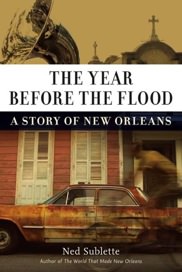
Once alight with bulbs that spelled out Armstrong, the large steel archway where North Rampart and St. Ann streets meet in New Orleans was dark, its white paint overtaken by rust. Beneath it, a thick, carelessly wound chain bound two iron gates, from which dangled a steel padlock. The whole assembly looked as if meant to secure some oversized bicycle rather than the entrance to a 32-acre city park named for trumpeter Louis Armstrong and modeled after Copenhagen’s Tivoli Gardens. Armstrong Park was closed, had been since the flood following Hurricane Katrina. You could see the bronze statue of Louis, trumpet in his left hand, handkerchief in his right, but only from a distance through iron bars.
Armstrong in prison. That’s what it looked like, in early 2006. Or maybe Louis was on the outside. Maybe it wasn’t he but the city—its residents and those of us who are drawn to New Orleans for music or love or just escape—locked away. I remember something author Ned Sublette said around that time, in an interview: “We’re not watching history disappear, history is watching us disappear.”
A cobblestone plaza behind the park’s closed gate marked Congo Square, where two centuries ago enslaved Africans and free people of color drummed and danced to the bamboula rhythm each Sunday, exerting their right to free expression as their masters prayed at church, seeding the beat of the earliest jazz and just about all New Orleans music to follow. Nowhere else in the North American colonies had slaves been allowed to play their drums, let alone freely assemble. For anyone with even a passing knowledge of New Orleans culture, Congo Square was sacred ground long before drummer Luther Gray lobbied successfully for a listing on the National Register of Historic Places in 1987, including even the period from the late 19th century through 1971 when the spot was officially named Beauregard Square in honor of a Confederate general.
Not everyone in New Orleans knows the word bamboula. But beat out the rhythm and folks nod in recognition, clap correctly (on beats two and four) and get their shoulders and hips moving in knowing dance. That sort of cultural response spans generations and contexts: Listen to Louis Armstrong’s jazz or Fats Domino’s rock ’n’ roll, the Neville Brothers’ funk or Lil Wayne’s chart-topping rap and a straight line emerges, through most of the city’s history, via music, undisturbed by two prior levee failures in the 20th century alone and a fire that destroyed most of the city’s structures in 1788.
What about after 80 percent of the city was submerged for two weeks, when the clearest mark of connection was the scum line left by floodwaters? What about now, more than four years later? The gates to Armstrong Park are freshly painted and lit each night, Congo Square open daily. Yet also, according to the Greater New Orleans Community Data Center, some 6,500 homeless are living in abandoned buildings and rents have risen 40 percent since Katrina; some 4,500 public housing units, razed despite much protest in 2008, are yet to be replaced.
“Let’s not lose sight of these as what they are: homes,” Marshall Truehill, pastor of the First United Baptist Church and former chairman of the city’s planning commission, told me then, nine months before his passing. “When you destroy neighborhoods, you tear apart a culture too.”
Which brings us back to the flood, and its prehistory. “The destruction of buildings in 2005 was fearful, but so was the loss of something intangible,” Sublette wrote in his 2007 book, “The World That Made New Orleans: From Spanish Silver to Congo Square.” “African America took a blow when the collective knowledge of black New Orleans was scattered to the four winds. Dispersing that population was like tearing up an encyclopedia in front of an electric fan.” If that volume attempted to restore some of that information, Sublette’s new “The Year Before the Flood: A New Orleans Story” explains how he got his hands on the encyclopedia in the first place, just before the cruel winds blew, and what it means to him.
|
To see long excerpts from “The Year Before The Flood: A Story of New Orleans,” click here. |
Sublette tends to begin at the beginning. For his first book, the sprawling and essential “Cuba and Its Music: From the First Drums to the Mambo,” he took as a starting point Cadiz, circa 1104, and spent 600 pages just to get to 1952, when mambo was still a craze and Fidel Castro a rabble-rousing lawyer. He tempered such ambition with the last volume: “My story begins in 1492,” he wrote, “in Roman Catholic Europe.” His goal? To explain “how New Orleans got to 1819,” drawing that date from a traveler’s description: “On Sabbath evening, the African slaves meet on the green, by the swamp, and rock the city with their Congo dances.” Along the way, he detailed how those Africans got to that green, what their dances probably looked like, why they were identified as “Congo,” and how we came to say that they “rocked” in the first place. Sublette, a musician, music producer and, above all, a crafty and diligent scholar, constructed a social history staked to the course of the slave trade in the Western Hemisphere with a backdrop of musical development. In “The Year Before the Flood,” music jumps to the front seat, but the legacy of slavery rumbles along throughout the ride.
“New Orleans presents a peculiar challenge for a writer,” Sublette writes. “Because it moves not only in linear time but also cyclical time. … [E]ach year is the same as the last—as in ancient Egypt, where the years weren’t numbered. Cyclical time relies on an elaborate schedule of festivals associated with the calendar to reinforce its timelessness, creating a rhythm that propels the year. Cyclical time is pagan, and local; it is the time myth takes place in.” Thus, “The Year Before the Flood” rides the cycles of life in New Orleans—parades, murders, hurricanes and festivals. (Sublette identifies the city as the northernmost point of what he calls the Catholic “Saints and Festivals Belt.”) Defying its title, the book spills out into the year of the flood and beyond through a brief but pointed coda. It starts four decades earlier. Sublette, who was born in Louisiana and has lived in New York for 30 years, began writing this memoir during the 2004-2005 academic year, on a fellowship at Tulane University. He was thrust back to his own beginnings, too. He opens in Natchitoches (pronounced Nackatish), La., with his first-grade teacher explaining to students why coins must not be put in mouths. (“It might have been in the hands of a colored person.”) By the seventh grade, Sublette and classmates are asked to dramatize a slave auction. “Some people lived between the piety of knowing that slavery was bad,” he thinks to himself, “and the desire of living it once again.”
Cut to Tulane’s Howard Tilton Library, with Sublette “still trying to break through the lies I’d been told in grade school and at the movies.” He’s excited by the idea of living on Constance Street (his wife is writer Constance Ash), in a rented 1880s home in the Irish Channel district; the two are charmed by its old floors and 14-foot ceilings and lulled to sleep by the sound of passing trains. What emerges is a jelly roll of a story—loving musical analysis and anecdote wrapped in historical analysis, filled also with clear-eyed accounts of the violence and racism endemic to New Orleans life and dotted at one end with caustic criticism of the Bush administration’s exploitation of disaster. Every bit of it grows personal: Sublette discovers that, two years earlier in the house he’s rented, a white Tulane student was stabbed to death in his kitchen by three black men with criminal records who’d knocked on the door and asked for money, then pushed their way in. When Hurricane Ivan bears down on New Orleans in September 2004, Sublette is in New York for a week: He books a last-minute plane ticket out of New Orleans for Constance, as others are trapped on packed highways and Mayor C. Ray Nagin announces that the Superdome is available as shelter. “We could evacuate because I was on top of the situation, and we had the means ,” he writes. “Suddenly, I was on the survival side of the rich/poor divide.”
“This book is about things New Orleanians maybe took for granted,” Sublette explains early on, “and non-New Orleanians mostly didn’t know about.” Which made me time-travel back to 2006, when, reporting in the wake of Katrina, I sat in the Xavier University office of clarinetist and professor Michael White. “I don’t think America ever truly understood New Orleans culture, because the mind-set is so different here,” he said, peering into the red notebook in which he’d jotted down the names and whereabouts of colleagues. “So that whole tradition was hidden from most of America.”
Certainly misperceived. Yes, the glorious and exotic culture of New Orleans provided potent metaphor in the wake of tragedy, still does. Largely missed was the fact that those musicians—that culture—was, and remains, the story to great extent; always has been when it comes to New Orleans. Sublette well grasps that in 2006, second-line parades marked the first and best assertions by black and poor New Orleanians of a right to return. But were they welcomed back? In his previous book, Sublette quoted Christian Shultz, a traveler who in 1808 noted Congo Square slave dances: “These amusements continue until sunset, when one or two of the city patrol show themselves with their cutlasses, and the crowds immediately disperse.” He relates an eerie 2004 parallel by describing the strained relationship, even before Katrina, between those who parade through and those who patrol the streets:
“I had just snapped a picture of Bayou Stepper Michael ‘Aldo’ Andrews, as his nephew James ‘Twelve’ Andrews and the New Birth Brass band tore into what was obviously their finale from the front doorstep of the Mother-In-Law. It was overtime, and the cops were not inclined to let the band finish their last few bars. The law must be obeyed to the letter in New Orleans, at least if you’re black. The cops turned a number, maybe seven, of their car sirens on full blast, right in the assembled crowd’s face, drowning out the band completely. … Cherry tops were spinning like it was a drug bust or a terrorist swat. You must disperse!”
“I was seeing a kind of civil rights demonstration,” Sublette writes of the Tamborine and Fan Club’s 2005 Super Sunday parade. He’s right—literally. In 2007, the Social Aid & Pleasure Clubs that sponsor weekly parades took to federal court to challenge the city’s hiking of police security fees, and won. The suit invoked the First Amendment right to freedom of speech and expression, claiming that permit schemes “effectively tax” such expression. “It’s a solid, core ACLU issue,” ACLU staff attorney Katie Schwartzmann told me. “We handle freedom-of-speech cases all the time. But this one is different in that the speech at issue signifies this city and an entire cultural tradition.”
“There’s a feeling among many that some of our older cultural institutions, like parades and jazz funerals, are in the way of the progress and don’t fit in the new vision of New Orleans,” Michael White had told me. “That they should only be used in a limited way to boost the image of New Orleans, as opposed to being real, viable aspects of our lives.”
There’s plenty of evidence to support that thought. Musicians were arrested last October during a funeral procession in Tremé, one of the oldest black neighborhoods in America and long an incubator for jazz tradition. At recent Mardi Gras Indian gatherings, the spectacle of black men looking fierce in eight-foot-tall suits of feathers and beads has lately been overtaken by the sirens and flashing lights of NOPD cruisers, enacting their own display of power and domain. “Parading in New Orleans is about taking control of the street,” Sublette wisely surmises.
Mardi Gras Indians emerge as perhaps the most transcendent heroes in Sublette’s story, and he follows the development of this tradition from 1885, when Becate Batiste, an African-American building tradesman in the Seventh Ward of partly Indian descent, took to the streets with his group, the Creole Wild West, a downtown posse of African-Americans dressed like Indians.
“Mardi Gras Indians are, in effect, a black mystic society,” Sublette explains. “It’s easy to imagine what Mardi Gras Indian performances might mean, but it means what its practitioners need it to mean, and it is as much mystery as it is clear meaning.” Yet he leaves no doubt that this expression is, as much as jazz, and as much as the white Mardi Gras, a direct response to a near-century of Jim Crow. “Reconstruction era carnival was the fine-arts wing of the campaign for white supremacy and removal of black people from the political process,” Sublette writes in a chapter on Mardi Gras. Lest we ignore the present-day vestiges of this legacy, he unpacks enough history to clear up any doubt about the meaning of an 18-foot-tall statue of King Kong that rolled along in the Comus krewe parade in 2004, glowering fiercely, arms upraised as onlookers pelted it with beads. “Was I really seeing what I thought I was seeing?” he asks. He suspends disbelief by harking back to the krewe’s 1873 spectacle “The Missing Links to Darwin’s Origin of the Species,” identifying the gorilla as a clearly recognizable caricature of recent ex-Gov. P.B.S. Pinchback, the first African-American governor in the United States.
The great body of New Orleans culture defies not just calendars but categories. Therefore Sublette offers a convincing argument that “key elements of rock’n’roll came out of New Orleans, in an open circuit with Memphis, just up the river,” and devotes two chapters to the hip-hop that these days, as much as brass-band music, is the sound of New Orleans’ streets. “The usual way of dealing with hip hop when people write about New Orleans is to ignore it,” he writes, “or alternatively to focus only on hip hop as if none of the rest of it existed. Either one is a mistake.” After rapper Soulja Slim is murdered, his mother, a member of the Lady Buck Jumpers Social Aid and Pleasure Club, dances her grief away at the group’s second line that weekend as the Rebirth Brass Band plays, supporting Sublette’s correct notion that “on the porous, sinking ground of New Orleans, styles and tunes coexisted in the same house, the same family, and even in the same body.”
One thing that is clear: The changing population of the city has affected the body politic. A 2008 Times-Picayune piece by Michelle Krupa cited a study by University of New Orleans political scientist Ed Chervenak, based on voter turnout in the 2003 and 2007 gubernatorial elections. The results, Krupa wrote, “confirm what election-watchers have suspected since Hurricane Katrina: The number of voters in the New Orleans area has fallen sharply, with African-Americans and registered Democrats losing the most ground.” As Sublette says in his coda, although the city is still majority-black, the City Council is majority-white for the first time in decades. (That balance may adjust yet again after this week’s election.)
Jason Berry put it succinctly in a new epilogue to a reprinted “Up From the Cradle of Jazz”: “The history of New Orleans in the wrenching aftermath of Hurricane Katrina can be telegraphed in one sentence: Politics failed, culture prevailed.” The culture that Sublette celebrates remains a primary means of social justice activism. Last Aug. 31, a second-line parade more than 1,200 strong traced the 25-block chunk of the historic Lower Mid-City neighborhood now threatened by the latest hot-button issue: the fight over Charity Hospital, the city’s largest health care provider for the uninsured, which has stood vacant since Katrina. (Louisiana State University, which governs the hospital, has proposed a controversial $1.2 billion plan for a new medical complex that would raze a chunk of Mid-City, leave the old building as one more blighted architectural treasure, and further delay the resumption of critical medical services. A recent federal arbitration ruling awarding $475 million in FEMA reimbursements makes this prospect all the more probable, though hardly definite or desirable.) Parading in New Orleans is about taking control of the street.
Yet the city of New Orleans has always held an odd, dysfunctional relationship with the culture it prizes and promotes. Sublette’s book can help prime one for an appreciation of the current situation. Making music in New Orleans has, for the most part, always meant a marginal living. In the three years since Katrina, it’s become a losing proposition. Right around the second Katrina anniversary, a “Musicians Solidarity Second Line” featured dozens of musicians carrying but not playing their instruments. Not a note played, not a step danced. A slow, steady rain lent dramatic drips to homemade signs that read: “Living Wages = Living Music” and “Imagine a Silent NOLA.” “Historically, musicians have been taken for granted here because it’s so common and pervasive,” said Scott Aiges, a director at the New Orleans Jazz and Heritage Foundation. “When we hear a brass band it’s just another day. But these musicians are the working poor, making an average of $21,000 a year.”
In late August, Jordan Hirsch, executive director of the nonprofit Sweet Home New Orleans, pored over results of his latest “State of New Orleans Culture” report: More than 80 percent of those identified as “culture bearers” had returned to New Orleans; musicians reporting a 62 percent decrease in their income from music compared with their pre-Katrina earnings. Meanwhile, costs of living have risen 11 percent. Hirsch scratched his head. “What type of value is placed on this in a real sense?”
City ordinances and policies are a central part of the problem, leading to unpleasant ironies. In September 2005, Angeli on Decatur, a modest restaurant and bar on a French Quarter corner, began inviting in some of the musicians who’d begun again to play on the street outside. “Live music at Angeli at that moment was like medicine,” civil rights attorney Mary Howell recalls. “You felt like you could breathe again.” The live music at Angeli lasted for nearly a year—until the city of New Orleans put a stop to it. The place wasn’t zoned for live music. Another post-Katrina bright spot was Vaughan’s, where trumpeter Kermit Ruffins still holds court on Thursday nights: They were burning wood outside the place to kill the awful smell still lingering in the air, Ruffins recalls, but the music was back. A piece in the Nov. 23, 2009, edition of New Orleans City Business newspaper explains that although the club’s owner, Cindy Wood, would now like to expand those offerings, she’s barred from presenting music on any other night.
“This ridiculous city zoning ordinance that prohibits live entertainment in the city of New Orleans is breathtaking in its vagueness and overbreadth,” Howell says, “and is so badly written it prohibits live entertainment everywhere except where it’s specifically permitted.” As she points out, it’s the capricious enforcement of such policies, especially noise ordinances, that makes matters worse and threatens the spontaneous culture Sublette celebrates in his book. The kids in Tremé that Sublette describes picking up instruments (or just cardboard boxes and cans) to follow in the footsteps, real and metaphorical, of older musicians saw trombonist Glen David Andrews and snare drummer Derrick Tabb hauled off like criminals when police broke up a 2007 memorial procession there. (The charges—“parading without a permit” and “disturbing the peace by tumultuous manner”—were dropped some months later.) But I recall Andrews, earlier that year, after a flurry of murders had shaken the city, following a march to City Hall. He stepped up to a lectern and led a chant: “Music in the schools!” Tabb was recently in the running for a CNN “Heroes” award, for his “Roots of Music” program, which brings instruments and instruction to more than 100 public school students.
Late last year, a revised citywide noise ordinance was raised within the City Council, then quickly tabled. A newer version has surfaced, scheduled for a council vote later this month. The proposal originates from French Quarter residents and business owners who take issue and offense with the sonic barbarity of Bourbon Street. (In his book, Sublette refers to Bourbon Street as “an alcoholism theme park,” with “live cover bands playing high-volume crap-rock at 3:30 on Monday afternoon.”) Yet there are deep suspicions among musicians and their supporters that the proposed noise ordinance changes will further inhibit live-music presentation in general and greatly embolden police and even civilian regulators to clamp down more tightly on street culture. Both sides agree on one point: The present ordinance is essentially unenforceable.
“We want infrastructure not alms, not even funding necessarily, to nurture and promote our sophisticated, treasured, living culture,” clarinetist Evan Christopher wrote me in an e-mail recently. Christopher, who moved to New Orleans more than a decade ago, has mastered the technical aspects of his instrument’s Creole legacy; he’s studied just as rigorously the social purpose and context embedded in that music’s development. “Infrastructure means protecting the participants and practitioners, and helping them benefit economically from their efforts by removing obstacles that hinder the vitality of our culture and the transmission of indigenous forms of expression to the children of our community.”
As New Orleans gears up to elect a new mayor—a primary election is scheduled for Feb. 6—expectations for meaningful change regarding cultural policy have been raised. Where Luther Gray worked two decades ago to amplify the voices of ancestors in Congo Square, he’s now focused on Artists in Residence NOLA (AirNOLA), a consortium of his fellow contemporary culture-bearers, consolidated though monthly roundtables, in the hopes of achieving a place at the policy table. Jan Ramsey, publisher of the monthly music magazine Offbeat, is one organizer of a campaign, “Music Swings Votes.” Both groups are among the more than 80 that contributed to a 21-point election platform focused on indigenous New Orleans culture. Most significantly, “21 for the 21st Century” calls for: the creation of a city department or office of cultural affairs and economy (a notable lack in “jazz’s birthplace”); and a dedicated funding source for the city’s cultural economy (New Orleans grants roughly $350,000 annually to arts organizations; San Antonio, Texas, by contrast, provides some $6 million). In the largest sense, what’s called for is clear: the sort of recognition Sublette’s latest book offers that both the brightest promise and darkest ailments of New Orleans must be dealt with via local culture. From a purely practical standpoint, if a city built on culture is to be rebuilt on culture, the moment has arrived to confront the ill will and illogic embedded within noise and live-music zoning ordinances, and to more effectively market its jazz tradition without selling it out. Some positive focus on these ideas from mayoral candidate James Perry and an ongoing dialogue along these lines fostered by Louisiana Lt. Gov. Mitch Landrieu (the mayoral campaign’s front-runner) offer real promise. Among Landrieu’s related efforts, his World Cultural Economic Forum initiative has attempted to restore Louisiana’s international prominence when it comes to the arts. [Editor’s note: Shortly after the publication of this review, Landrieu won the Feb. 6 mayoral election. He will be New Orleans’ first white mayor since his father held the city’s top post a generation ago.]
Not long after Ned Sublette settled into his Irish Channel apartment but well into his immersion into the local culture, he began making music again. “I was inspired,” he writes. “When I got back to our house, I pulled out my guitar and started to sing. I was singing a little more relaxed. I had found something new in my old, ragged voice.”
That reminded me of a moment at one of Landrieu’s cultural economy forums: Denis G. Antoine, ambassador to the U.S. from Grenada, said, “If we’re taking about rebuilding New Orleans, we have to ask: Which New Orleans are we talking about? We have to talk about social values and an ancestral past. There is an anthropological aspect to the nurturing of a new New Orleans and this will help direct what is appropriate and what is not. New Orleans is a perception. It’s about how safe do you feel to be you?”
|
Larry Blumenfeld is working on a book about cultural recovery in New Orleans based on his research as a Katrina Media Fellow with the Open Society Institute. His writing has appeared in The Wall Street Journal and The Village Voice, among other publications, and his essay “Band on the Run in New Orleans” appeared in “Best Music Writing 2008” (Da Capo). He is editor at large of Jazziz magazine. |
Independent journalism is under threat and overshadowed by heavily funded mainstream media.
You can help level the playing field. Become a member.
Your tax-deductible contribution keeps us digging beneath the headlines to give you thought-provoking, investigative reporting and analysis that unearths what's really happening- without compromise.
Give today to support our courageous, independent journalists.



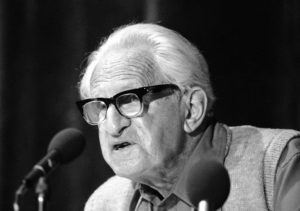
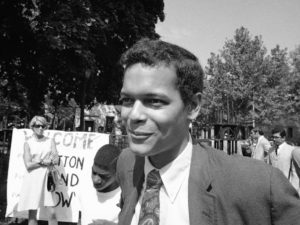
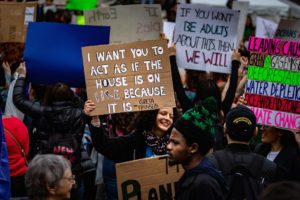
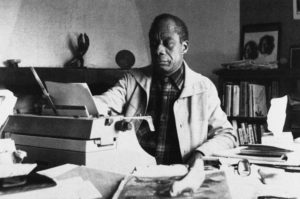
You need to be a supporter to comment.
There are currently no responses to this article.
Be the first to respond.